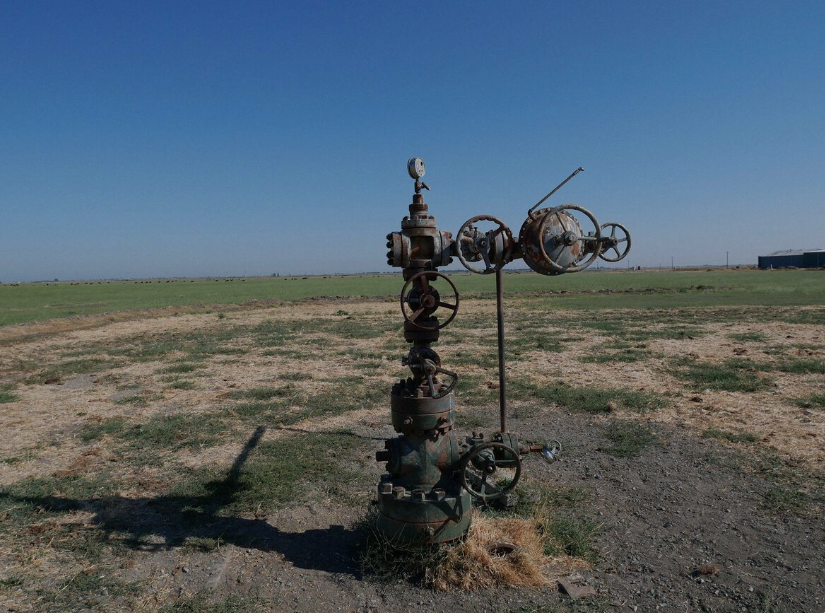
Abandoned and inactive oil wells that threaten the environment are scattered throughout Lea and neighboring counties. These wells have run dry, and the job of capping and plugging them costs millions. Unfortunately, oil and gas operators often walk away without properly plugging these wells and cleaning up well sites. They are sometimes referred to as “zombie wells”, and have been a major problem for the oil-rich state for decades.
Current law provides the State of New Mexico with little recourse. .
“Once a wellhead has been established, it becomes a forever problem,” states an article posted at Earthworks org. “Thousands of idle, abandoned, and orphaned well sites still pollute. Even plugged facilities are not safe from future problems. If operators are not held responsible for the life of a well, New Mexicans will continue to pay economically and experience health consequences along with threats to our natural resources.”
Ridgeway Arizona to Pay for the Plugging of 300 Wells
The State of New Mexico is addressing this problem with one oil and gas company, Ridgeway Arizona Oil Corp. The Texas based company has agreed to pay for the plugging of some 300 of its inactive wells, all located in Chaves, Lea and Roosevelt counties.
The deal the State of New Mexico has made with Ridgeway Arizona is not straightforward. Under agreed upon terms the state must pay the initial costs of sealing the wells, and Ridgeway overtime will reimburse these costs to the state. According to a KOAT 7 Action News report, “…it could take 100 years for New Mexico to get repaid.” It is important to note that Ridgeway Arizona still “…owns at least another 25 active wells in New Mexico.”
New Mexico’s Abandoned Well Problem
The 300 inactive wells to be capped in Chavas, Lea and Roosevelt counties are an important step but only a first step to solving the Land of Enchantment’s statewide abandoned well problem – consisting of approximately 1,700 wells on state and private lands, plus additional wells on federal and tribal lands.
Former state deputy attorney general and now an attorney for the Western Environmental Law Center Tannis Fox told KOAT 7 Action News that most of New Mexico’s abandoned wells have been left by oil companies that are no longer in business. Fox said, “We’ve been drilling in New Mexico for a hundred years. So the abandoned well problem, you know, has been going on for decades….”
Cost of Plugging Abandoned Oil Wells
The average cost of plugging an inactive or abandoned oil well is $125,000. For several years the state has used monies from the Oil Reclamation Fund, as well as dollars from federal grants, to seal these wells. The Reclamation Fund is bankrolled by a severance tax on oil and gas. The number of wells the state is able to plug each year depends upon the amount of money the state receives from the severance tax.
Because Ridgeway Arizona is still in business and operates wells in New Mexico, the state was able to take action with the company. Dylan Fuge, deputy secretary of the Oil Conservation Division of the New Mexico Energy, Minerals and Natural Resources Department said, “The balancing act here was between pushing Ridgway [Arizona], you know, into sort of immediate bankruptcy…” which would create liability to the state “…with limited recourse to at least developing a model where there can be positive cleanup on the ground, and the state has some revenue coming in to offset those remediation costs.”
The settlement the state made with Ridgeway Arizona is for the company to pay the state “at least $30,000 a month.” The figure could be more, depending upon the amount the company produces per month, but there are no guarantees. Doing the numbers and assuming Ridgeway Arizona stays in business through the years, “it could take up to 103 years for the state to get its money back,” reports KOAT 7 Action News.
Fox sees the state’s settlement with Ridgeway Arizona as a “…poster child for the need for financial insurance reform in New Mexico so New Mexico protects itself against this abandoned well problem.”
Current state law requires oil companies to tender upfront a $250,000 bond before drilling commences, regardless of the number of wells being drilled. This money goes into the Oil Reclamation Fund. Fox is lobbying for the amount to be higher. About the $250,000 upfront bond she says, “That’s not enough money to cover sealing three wells.”
New Mexico’s 1935 Oil and Gas Act to be Updated
Governor Michelle Lujan Grisham wants the 2024 New Mexico State Legislature to significantly update New Mexico’s outdated Oil and Gas Act of 1935. The act “outlines oversight of fossil fuel production in the state. It hasn’t been updated in decades,” states an article published at SourceNM.com. Sidney Hill, public information officer for the New Mexico Energy, Minerals and Natural Resources Department, told SourceNM, “The act no longer contains all the tools necessary to oversee the current industry and ensure robust environment protection.” One of the tools the act lacks is addressing the logistics and costs to the state of plugging abandoned and inactive wells.
In 2023 the State of New Mexico sealed approximately 150 abandoned wells. The norm is 50. If the state can repeatedly seal 150 wells annually over the next 10 years, “all 1,700 abandoned wells on state and privately owned land would be sealed by 2035,” states the KOAT 7 Action News report. “That does not account for all of the wells on federal and tribal lands.”


